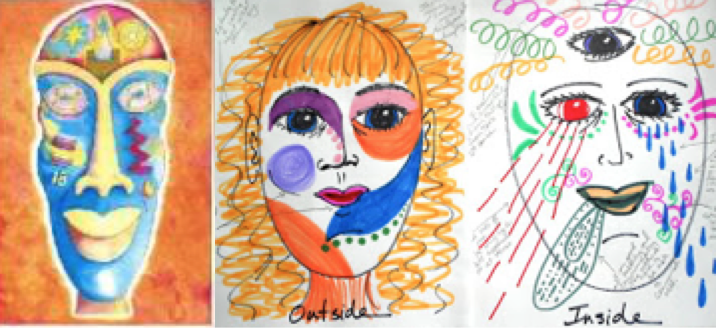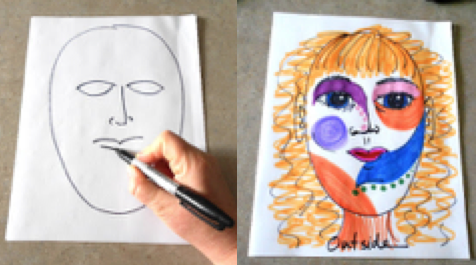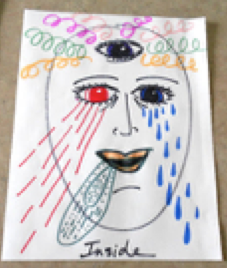Susie knew that if she skipped out on the annual tradition of a large family get-together, her grief would grow and attending the following year would be that much harder.
Susie is a member of a spousal loss support group and she shared that it was difficult leaving her house recently to attend a friend’s celebration. However, Susie mustered up all of the inner strength she could, fed herself positive affirmations and drove over half an hour knowing a cold front was moving in and a rainstorm could hit at any moment.
Amongst her close friends who have shown her warmth, love and acceptance over the past eight months, were some “nice acquaintances” that Susie only saw at these types of gatherings. She worried how she would be able to chat casually or make small talk.
“How are you doing?” was the question asked by a dinner guest.
The question alone is difficult for many grievers to answer. Do you tell the truth and change the energy of the room? Should you share your deep sadness, loneliness, and the rollercoaster of emotions you have experienced after the loss of your loved one? Or do you hide behind a smile and pretend everything is okay?
How are you doing? This question exposes multiple layers of other questions, thoughts and feelings racing rapidly in the mourner’s mind and body.
Susie saw a look of “terror” appear on the face the dinner guest just as she finished asking this question. Susie also felt terror that the question she had been asked and one commonly used as a way to politely greet someone, was about to open up a jar she didn’t really want opened. The look of oh please, please just say good, fine, or even something short and brief as some days are better than others, was written all over the lady’s face. It is common that someone who hasn’t experienced the loss of a loved one may feel a level of discomfort when presented with the pain, sadness, loneliness or any of the other intense emotions Susie had been feeling since the loss of her husband.
In that quick moment, Susie chose to respond with the answer she felt was desired. She withheld her vulnerable truth and chose to protect herself with her grief mask.

What is a grief mask? First, think of it in a context of hidden emotions. People in bereavement often put up a brave front, or pretend that they are fine, when they’re not. You might say they are actually putting on a “grief mask” to hide or protect their true feelings from the outside world.
Susie held herself together during the remaining part of the dinner party and even stayed through dessert. After the first guest made their exit, Susie said her goodbyes and quickly raced to her car during the height of the rainstorm. Once the door was closed, Susie’s grief mask came off, and intense emotions arose. “I screamed. I just sat there and screamed while it was pouring rain outside.” Susie shared that she felt she regressed back to when Fred first died, when she would have screaming episodes during the early stage of her grief.
The term Masked Grief relates to those situations where the griever has become so adept at suppressing their feelings of emotional pain that they take on another symptomology. Wearing a mask is a form of protection from the outside world. Especially when feeling vulnerable, shaken and when your world has flipped upside down, a mask might be necessary when greeting the mailman, waving to a neighbor or mingling with house guests. The griever gains an opportunity to increase self-awareness by understanding the masks, the feelings and thoughts worn on the mask, as well as situations and environments where one may feel more inclined to put on a mask.
One can look inward to explore, express and externalize inner feelings, emotions and thoughts with the use of art expression.
Art therapy provides a non-verbal form of expression that encourages self-exploration through the use of art media. When utilizing art as a form of expression, it is important to distinguish between process art vs. product art. The art you create is not part of an art class. It is not graded. Most importantly, in art expression it is important to not hold any judgement, even from oneself. Art expression is not about the finished product; it focuses on the individual’s process in the art making. You may create art with your eyes closed in order to turn your focus inward or with eyes open to connect with colors, shapes and symbols. Your process is your own.
Here is an art intervention idea that can help you further externalize your pain, increasing self-awareness of your grief journey as well as supporting your path towards healing.
Grief Mask: A Window to the Soul
Instructions
First: Understand the nature of “masks.” Begin to identify some of the grief “masks” you wear and why.
Use clay, paper mache, or even pen and paper to form the mask, or facial shape… make it as realistic or bizarre as you wish.
You can also make an outside/inside mask to express feelings, emotions or thoughts you display on the outside vs. the ones you hide on the inside.
Next: Think of a “grief mask” as a creative tool that can help a grieving person express her true feelings or deep emotions. The making of a grief mask is powerful. As you create the facial form, you can begin to unmask your soul. In this way, your deepest weaknesses, fears and pain, as well as your strengths and joys, may be brought to the surface.

Third – Draw what comes to mind when you are showing others a (general) “mask.”
Fourth – After completing the drawing for the “Outside” mask, take a second piece of paper and draw the oval, eyes, nose and mouth in the same way you drew the first mask features. At the bottom of the paper write “Inside” to identify that this drawing will be what is really going on inside the person, how she is feeling inside. What symbols, shapes, colors would be used to express and externalize your abstract emotions, feelings and thoughts. If you’re feeling angry, what color, what shape, what symbol would best express that feeling. If anger took on a physical form, became tangible, concrete, what form would it take?

Fifth – Once the griever has completed drawing both the Outside and Inside faces, process it. What symbols, shapes, colors were used, and what do they represent for you? Begin to create words to associate with your drawings and art expression.
Example: The blue and red tears represents the deep sadness I hold inside — a sadness beneath my anger that my loved one is no longer with me. Most of all, I am sad to be alone now.


